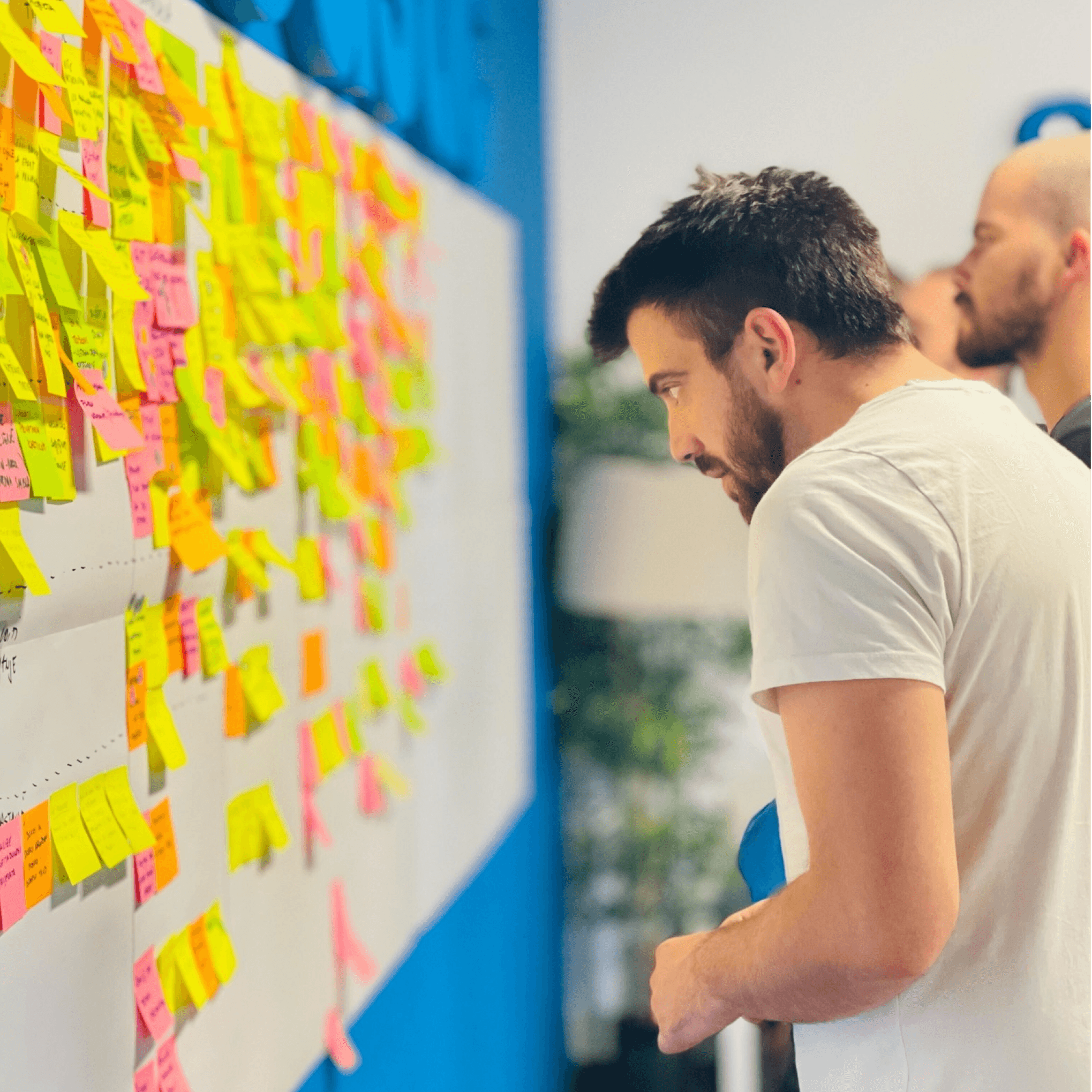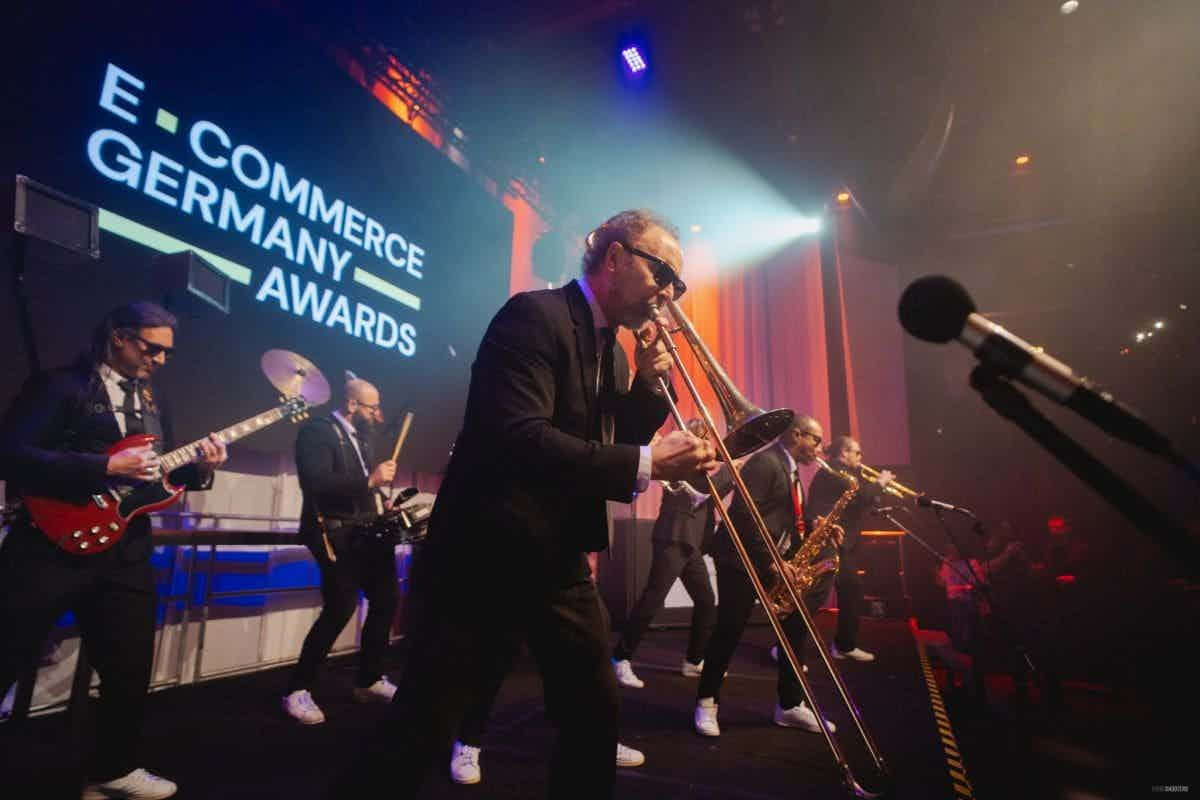You are here probably because you read Danilo’s blog about discovery workshops and tips and tricks on motivating stakeholders. Maybe you are here because you want to know the technical and UX analyst’s perspective of discovery workshops. Either way, let’s begin!
Onboarding on a train of problems
The main idea of a discovery workshop is to get on board with clients’ problems in the fastest and most effective way possible. We set up a discovery workshop to understand the client’s business without needing to spend a few years following the client to work (or conduct a field study). It is a “tell-me-everything” type of interactive meeting.
Thanks to this (and the whole discovery phase), you become an active part of the solutions, onboarding on their train of problems to help them find solutions. For me, this is the most exciting part of our job, getting to know down to the detail about all these different industries ranging from retail delivery and pickup to non-profit loyalty programs and event organization.
Tip of the iceberg
I like to look at the discovery workshop as a three-step UX research work, not just a discovery workshop with the clients. It is an intense UX strategizing and analysis of project ideation.
The steps are:
- Discovery Preparation
- Discovery Workshop
- Post-workshop Analysis
The whole discovery phase should last at least for a week (depending on a complexity of a project, it can take months) and it is understandable that clients can’t participate for a week in project ideation and workshops and it’s not necessary.
We need to understand all problems, organize them and define what the main focus should be. When you know what problem you are solving it is easier to solve it. You don’t solve a mathematical problem by throwing numbers. Every solution has steps and methods for how to get to it. It the same with any kind of custom problem-solving process.
1. Discovery Preparation
Decide on the methods individually for every project. The common requirements are concrete problems, the business model, target audience, and problem journey. Depending on clients’ preparation and requirement clarity we can use different methods. Some of them are SWOT, KANO model, Your worst competitor, Elevator pitch, System gathering… The point is to get to the answers in the best possible way, so whatever method works for you, use it.
You have to prepare for a discovery workshop. It is a live process that you cannot predict up to the last detail, but you can better prepare the participants and yourself.
Discovery preparation questionnaire
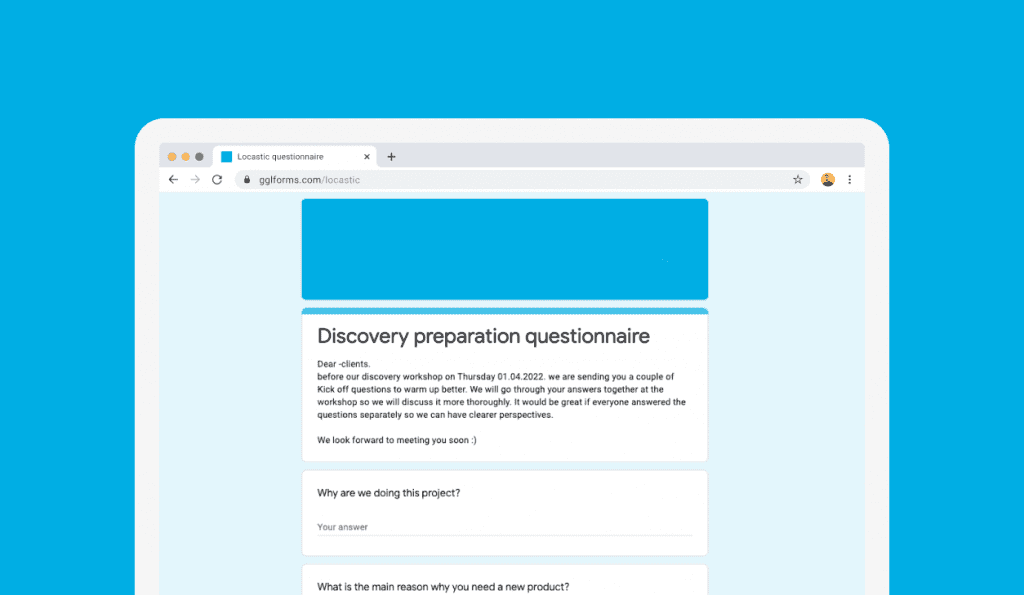
Danilo mentioned the questionnaire we send to clients before the workshop. This was inspired by a stakeholder interview – but – we found it to be a bit exhausting during the workshop since stakeholders can be very passionate about their differences and soon a simple interview exercise can be an hour-long discussion, usually not very productive.
What we did is, we took the stakeholder interview questions and developed a “Discovery preparation questionnaire” (…still working on a name). It’s a template of questions (google form) for understanding goals, fears, value, target audience, some of the main problems (what they think for now). We thought about developing a custom form, using some interactive ones, but why reinvent the wheel?
It goes something like this:
Dear -clients.
before our discovery workshop on Thursday 01.04.2022. we are sending you a couple of Kick off questions to warm up better. We will go through your answers together at the workshop so we will discuss it more thoroughly. It would be great if everyone answered the questions separately so we can have clearer perspectives.We look forward to meeting you soon 🙂
Us
Questions:
- Why are we doing this project?
- What is the main reason why you need a new product?
- What criteria do we have to meet?
- What is important for you personally to implement in the new system in order to solve a current problem?
Many times, your clients won’t tell you the exact problem, but tell you different scenarios that annoy them. Your job is to detect the real frustrations and what is causing them. This is why empathy is one of the most important soft skills for being a UX designer (or a UX-oriented project manager -KUDOS Dani).
Usually, there is a pattern. In one of our projects, the stakeholders listed hundreds of problems, but one adjective was popping all over the answers: “automatize“. In their answers, they gave us millions of cases where they need automatization and digitalization of processes and you could clearly see is their frustration is doing things manually.
Prepare all you want but always be ready to improvise.
2. Discovery workshop
To make the discovery workshop more successful we gather a team from different departments to participate in the workshop. Developers, other designers and project managers who are experienced and know what could go wrong in a project regarding technological constraints and requirements.
Send out the agenda to the clients before the workshop. I recommend not to write the agenda on the clock because it’s never accurate: communicate time durance like User personas 1h – 1h 30m (instead of User personas 10:00-11:15) because people can be late, it can last longer, we can take bigger pauses and after the first two exercises, noting makes sense anymore.
Kick off (cca 1 hour)
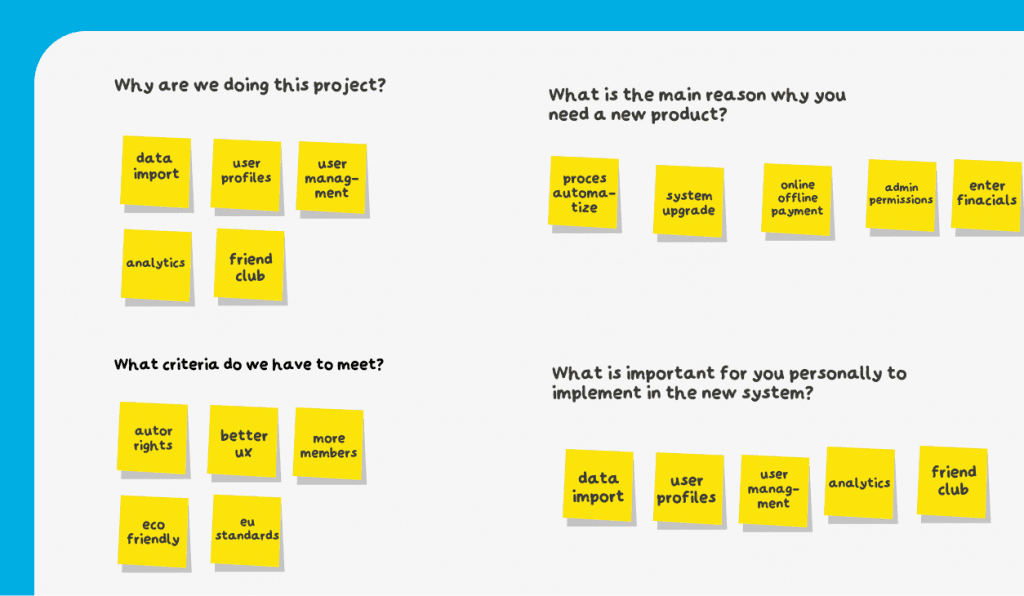
From the client’s perspective, I can only imagine how overwhelming a discovery workshop can be. We get them in a room for 5 to 6 hours to get their fears and problems on a whiteboard in a way they most probably never did. To help them a bit with this, we take what they already know (the preparation questions) and write them on the board, writing on the sticky notes the problems they mentioned. That will make them see we already have something to start with and the ice has already been broken.
Together we comment on the answers and talk furthermore about them, we can write down questions before the workshop so they can explain a bit their answers. Remember to take a photo of each exercise especially after this one since you will be needing the sticky notes for the next exercise!
Categorization (cca 1 hour)
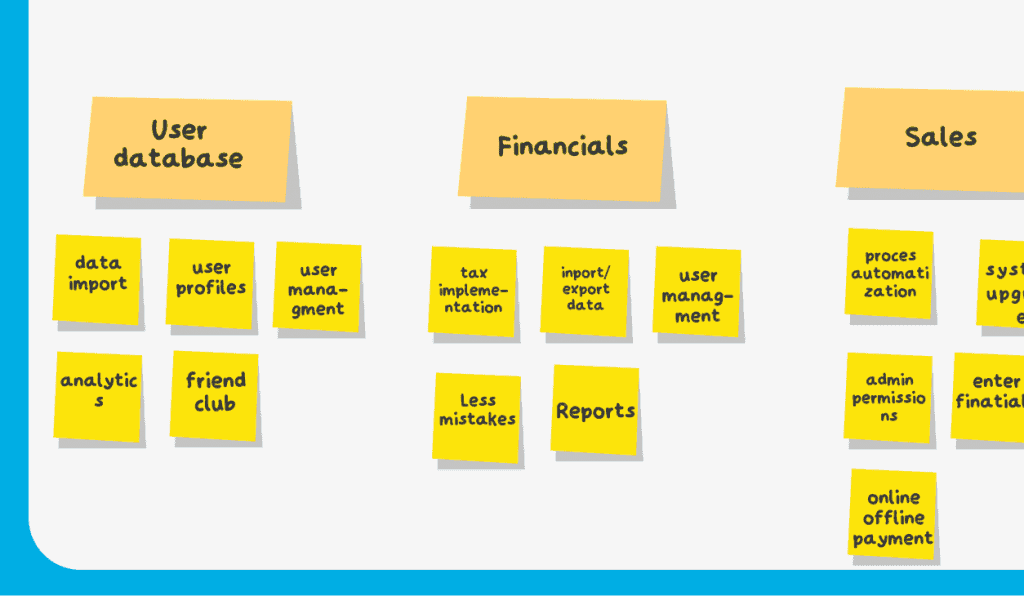
After the kick-off exercise, we are a bit warmed up, kind of broke the ice. The next thing to do is to move on to one of the exercises you chose (KANO, SWOT, Boat and anchor, Categorization…). We start with a sketch of the template on the whiteboard and move the first 3 sticky notes from kick-off to the new exercise. Explain the exercise to the participants and get them to follow your lead and categorize the sticky notes onto the new exercise.
Elevator pitch – the perfect solution (20 min)
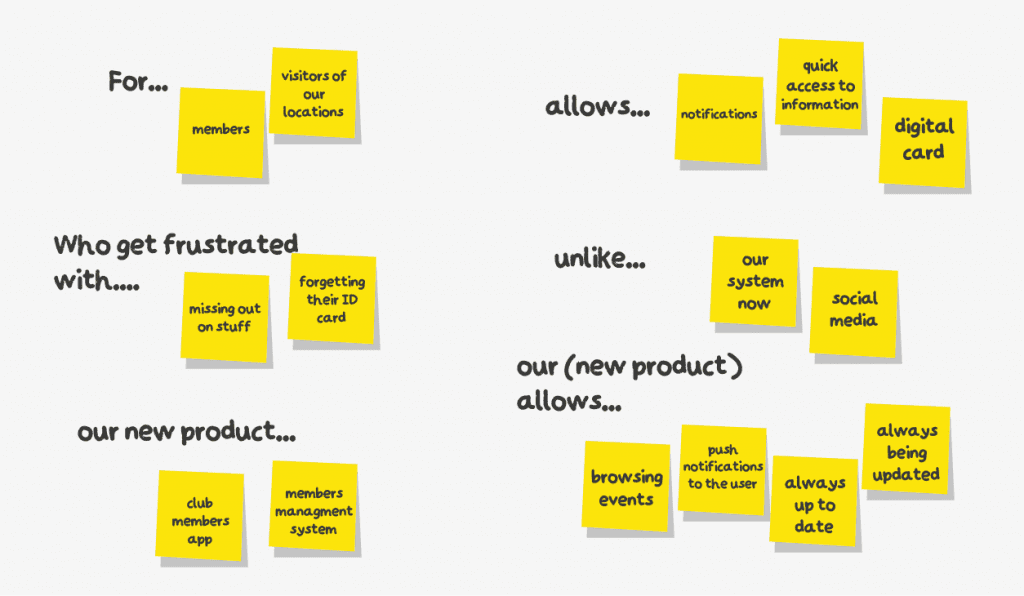
I love this one. This is a method where you define the goal of your project in one sentence using a very dynamic exercise. Since the elevator pitch is designed for quick pitching ideas (max. 3 minutes) so you don’t bore your investor, this is more of a romantic, futuristic approach where the clients think of the perfect solution that would solve their problems. This will help participants to (without much thinking) realize what is the most important feature/target audience.
The template goes like this: for… (your target audience) who get frustrated with…. (state the problem) our new product… (name of the product) allows… (some features) unlike… (current solution) our (new product) solves... (some problems.). Works like a charm. (you are testing it out, right?)
The result can be something like this: For customers who get frustrated with waiting in line, DontWait app tracks the waiting queue and notifies you when it’s your turn. Unlike current waiting in line for hours, DontWait app solves various problems such as waiting in line, holding in line, wasting time…
You can bend the form a bit for the sake of the language but the general idea stays.
The whole exercise can be done in 20 minutes. Do this in a very dynamic environment, make pressure, make them think and write fast. The first thing that comes to their mind. Get participants to read out loud the result. Remember, always get them to work together-alone.
User personas – target audience (cca. 1 hour – 1 hour 30 minutes)
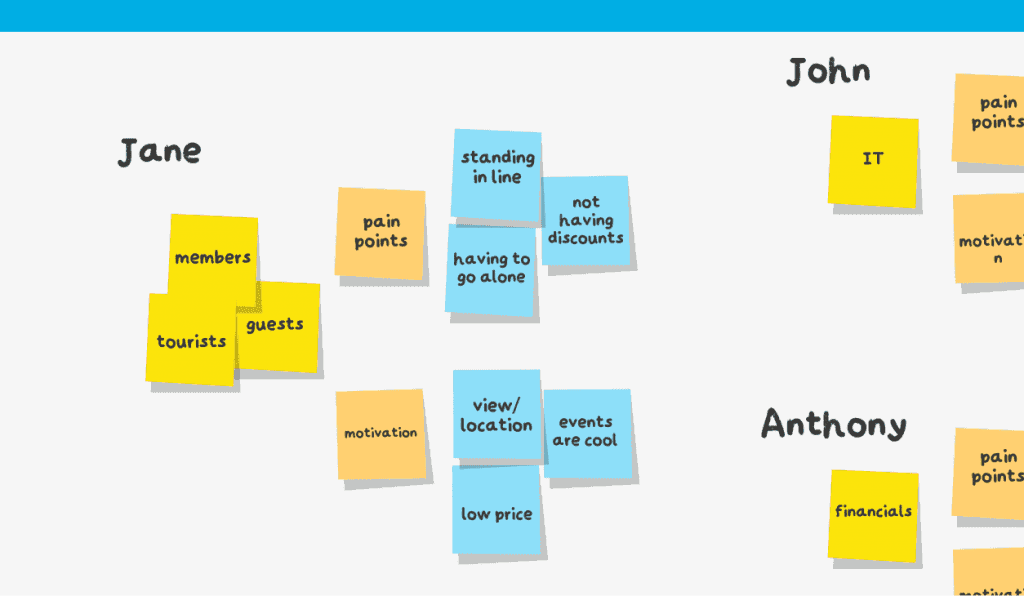
This is the most common exercise in any UX research. Target audience. You are creating a product or a solution for people who will use it. You can think of the most interesting feature for knitting tutorials but if knitters don’t watch tutorials but look at the design patterns, it’s useless.
Defining different target groups and their personas for more complex products is extremely important since complex custom solutions require different roles and permissions.
- List different groups of audience — get all those different target audiences on the sticky notes. Group them something like this: manager, cashier, loyal customer, potential customer…
2. Create a persona give them names — This is the most fun part. You give the stakeholders to name their target audience and all of a sudden they become so motivated because they have inner jokes about the names and the target audience.
3. Make them sympathize — Ask your participants: “What did you do to Ivan to annoy the c*ap out of him?”. They will start thinking about Ivan and what is he annoyed about, laughing and collaborating. This gives us a different perspective on what every target audience needs.
Afterward, you digitalize user personas and you can always refer to them: “Yeah sure, but Ivan would hate this feature!”.
Task analysis ( cca. 2 hours)
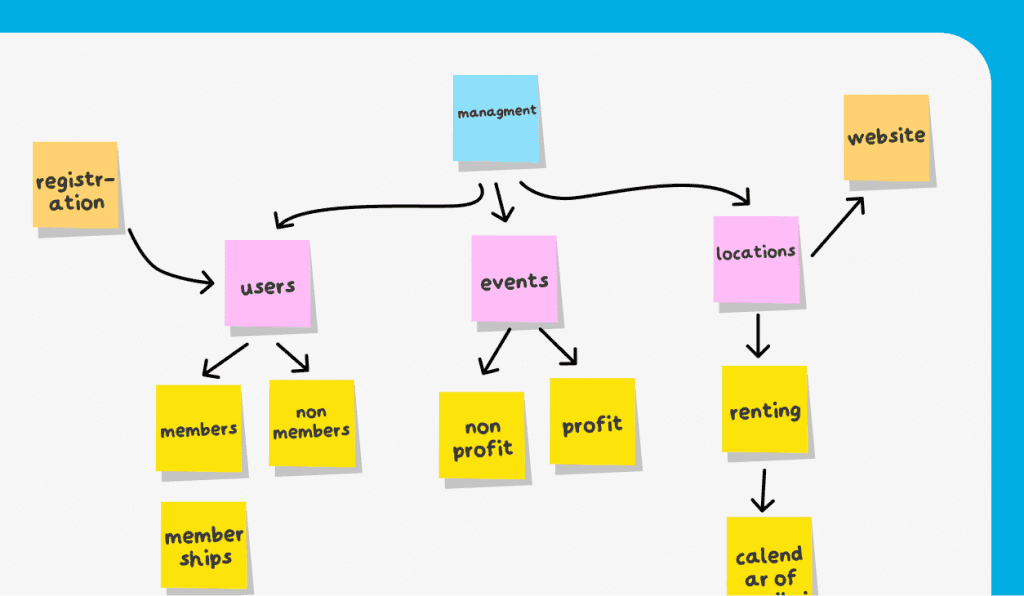
Task analysis is the fourth and usually the last part of the workshop. You can choose methods like: user journey, user flow, mini event storming, list of features, sympathy map.. )
Now, all know each other better, you gathered the goals, user personas and now it’s time to create a flow. A problem-solving flow. Do not focus on features, dropdowns or gamification and try to cut stakeholders from doing so. The point of this exercise (whichever method you chose) is to see where will our users need the product. If you read Danilo’s blog about Eventstorming workshops, you know how this works (if you didn’t, – go).
In the discovery phase, we do something that can be a foundation for the event storming workshops later on. Depending on the need, you can create a flow for every user persona especially if you have different perspectives and systems which will help us understand the differences, similarities, possibility for merging some features, etc…
After this exercise you know what is the problem, who has that problem, how do they get to the problem and where should we help them. Here you can finish with the workshop.
3. Post-workshop Analysis
In the post-workshop phase, you need to gather all the information, convert them into a digitalized format, and see if there are still unanswered questions. Since there are usually 20+ questions in this phase, I like to open a document or notes to gather all the questions we need to ask the clients. If they are not blocking questions, send them after you finished all you can (you may find the answer on the way). Wrap it up in a pdf and send out to your clients.
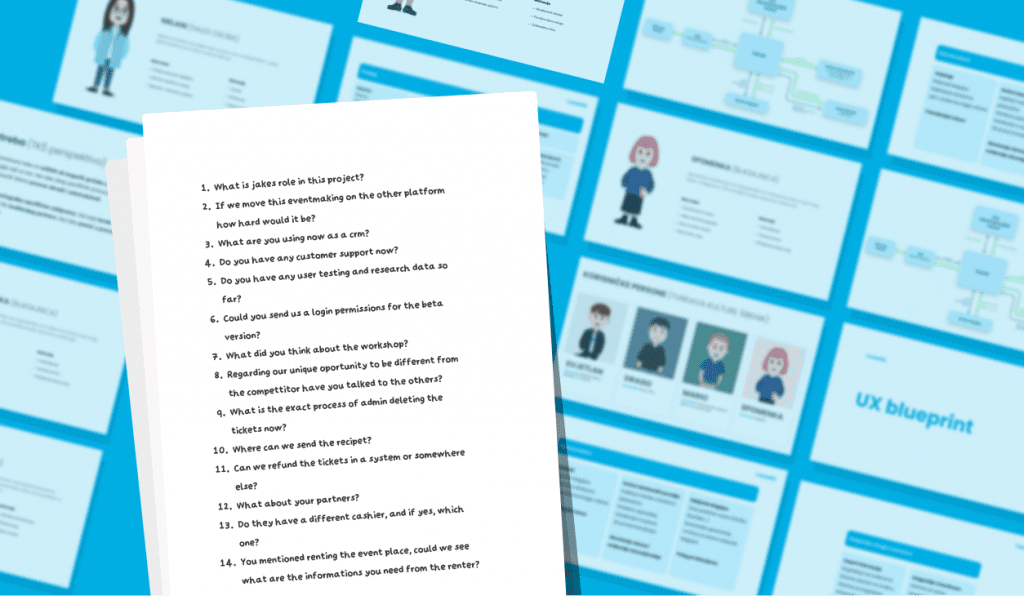
After the deliverables, you need to know if you have enough information to create a wireframe/blueprint/continue with the research on your own. If not, schedule another discovery workshop or an event-storming workshop. Here is a checklist we developed as a cheat sheet for this decision making:
- When is the deadline?
- What is the budget?
- Is our team capable of doing the required task?
- What are the long term and short term goals?
- What technology or methods of solving the problem was used by now?
- What legal regulations do we need to follow?
- Do they have a brand identity and strategy?
- Do they have a specific policy?
- Are there any security requirements?
Conclusion
At the end of the discovery workshop, you have no solutions. You just discovered a bunch of problems, possibilities, restrictions… but that’s is the goal. The Discovery workshop is to discover problems, not solutions. Having the right problems to solve is more effective than having an idea of the solution that is usually not even the right solution.
After the whole discovery phase, we deliver a defined blueprint of the project from the UX aspect, ideation and planning, technical requirements and business strategy. With this document you will be able to pitch your idea, onboard anyone on the project and show you have a completed, planned product to develop.
If you have any questions, tips or you want to find out more I can’t wait to hear from you! 🙂











